@iau-wgsn.bsky.social
BlueSky - our IAU edu infos
Please Contact Us
Channel
@iau-wgsn.bsky.social
BlueSky - our IAU edu infos
Please Contact Us
Channel
Help us! please. Our research needs as many human eyes as possible.
We want to test human’s vision under several different conditions (such as different climate, amount of smog, different abilities of people … ). That is why we developed an application for Android to ease you telling us which stars you see at which time in twilight.
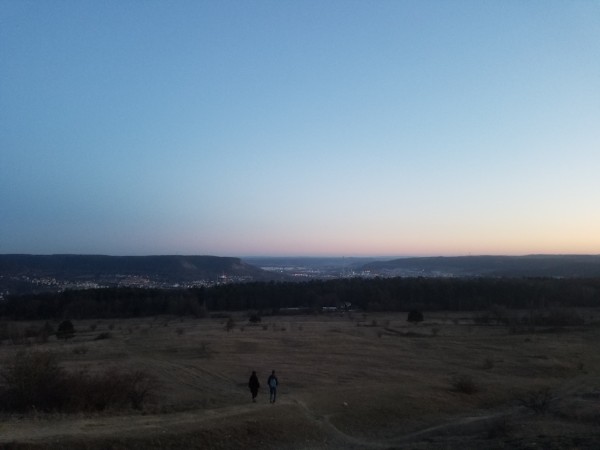
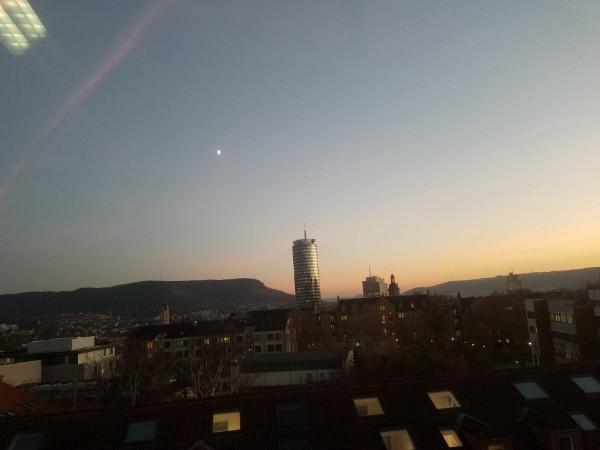
The visibility of stars outside the circle around the celestial pole that is always visible changes greatly during the year. Some stars are always in the daytime sky with the Sun and set with it. Stars at some distance from the Sun are just visible (or already invisible) at dusk or dawn. As the Sun travels along the ecliptic through the zodiac, the constellations visible with it in the daytime sky or at the edges of the night sky – at twilight – change. The Sun (apparently) travels from west to east, so that the stars it reveals appear at dawn – this is called ‘heliakisch aufgehen’ or morning star. The stars that will next appear in the daytime sky with the Sun are visible at dusk: evening star.
Because stars have different brightnesses, the background of the sky must be of varying darkness for the human eye to be able to see them. In addition to the different degrees of twilight (and, of course, the weather and light and air pollution), the ability of the individual eye also determines the time at which a star becomes visible or invisible to a person.
Significance
The dates around the ‘disappearance’ and ‘appearance’ of the brightest stars are one of the oldest ways of determining calendars, defining the seasons and establishing common rules for agriculture, seafaring and other weather-dependent activities in early human cultures. The beginning and end of visibility, the visibility limits, are therefore important markers in the course of the year with very practical significance. Famous examples include the significance of the heliacal rising of Sirius in Egypt and Mesopotamia, and the determination of the sailing season by the ancient Greeks using the stars of the Pleiades and Capella.
Why not try it out for yourself?
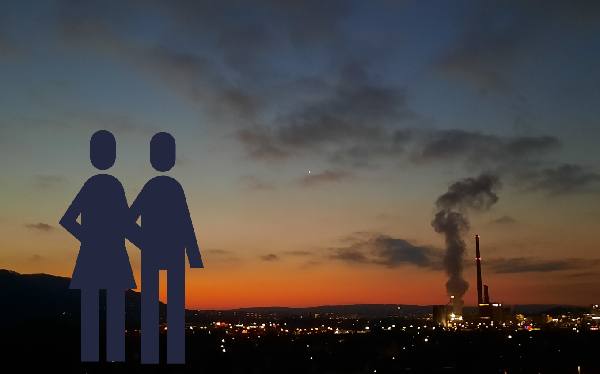
Firstly, such naked-eye observations are an enjoyable pastime and secondly, they also contribute to a better interpretation of historical sources. As part of a research project, we are interested in how well you can see the stars at dusk. Computer science students at Friedrich Schiller University in Jena have developed a smartphone app that allows you to easily and anonymously submit your observations. The app uses GPS to determine your location and stores the current measurements from the nearest weather stations – but no personal data about you. All you have to do is mark which stars you can see on the star map displayed.
PLEASE NOTE
This is an alpha version of the app, which means it is still in the development phase – for example, it cannot yet display planets and other minor details (the ‘Planned’ page at the bottom of the app lists what we are still working on). In addition, the app can currently only be used if you already know your way around the sky a little, as the map is not yet automatically aligned. That’s why we’re turning to you: if you’re reading this almanac, you’re sure to have the necessary knowledge to contribute here:
Thank you very much!
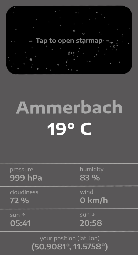
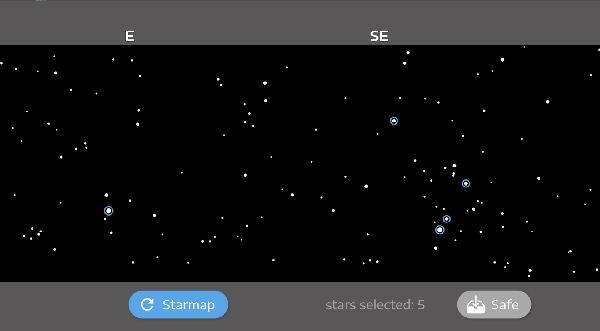
Dear tester,
this application is not even a “beta” version. It works fine and the data you collect are already very useful – but it is only the tip of the iceberg of what we want to develope. For instance, we already planed to implement the following things:
We welcome your further suggestions; please contact us!
Just for your information – as this is an old idea, there is had been an old version of this app before the project went to a software development team, a feasibility study was performed by physicists. This old version was downloadable as an *apk file.
An alpha version of the app was initially developed in a project internship (2019). This was only used for a basic feasibility study to determine whether it was possible to observe anything at all by switching between the bright mobile phone display and the ‘dark’ sky.
As these are twilight observations, this proved to be unproblematic. The apk file for this first app can be downloaded here. It must be installed on your smartphone.
By checking which stars you start/end to see at what time during twilight, you contribute to a scientific study on human vision. Thank you!
Download the app installer for Android (simply download):
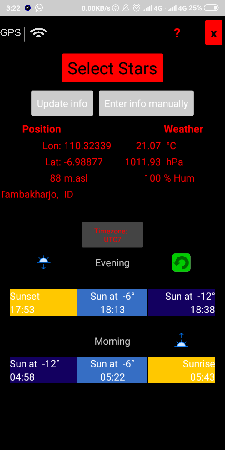
simply download
the app will ask you if you want to open/ install (please say “yes”)
and here you go…
Usage (short description).
Yes, it is secure! We are not interested in your personal data, so we don’t upload it.
BUT We are only interested in human eye’s data – so PLEASE do not let your dog, cat, or parrot… click the stars instead of you (we wouldn’t have the possibility to filter that since we do not request personal data like fingerprints).
By using this App, you participate in a longrunning worldwide study on naked-eye astronomy and the limits of human vision.
All you have to do is answer the simple question: “Which stars do I see right now?”
We are particularly interested in the stars you can see near the horizon, which is why only 30° of the sky above the horizon are shown in the App’s star map.
Furthermore, the most interesting time of the day for us is twilight, so the opening screen displays the exact time of sunset and sunrise at your position as well as the common steps of twilight brightness (sun at -6°, sun at -12°).
Your observations are most helpful if taking place in the time interval of `sun at -12°’ +/- 5 min. Of course, all observations at any other times are also welcome – so please feel free to contribute whenever you are outside, have a clear sky and minor light pollution. You can help us a great deal by just quickly opening the App and clicking on a few stars that you can see!
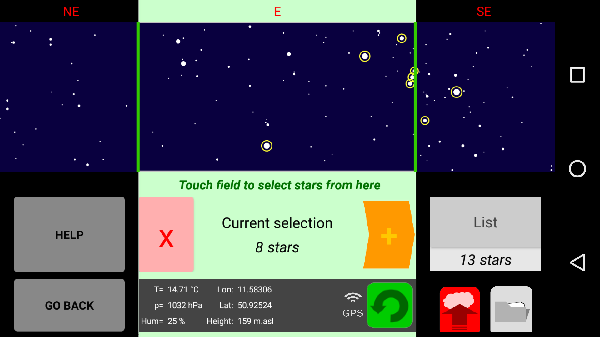
For more information, please read the documentation.
This Application is provided under CC BY-ND-NC 4.0 international licence.
Please see documentation for further information.
(February 2019)
cite as: Philipp Protte, Susanne M Hoffmann, Friedrich-Schiller-Universität Jena,
Physikalisch-Astronomische Fakultät